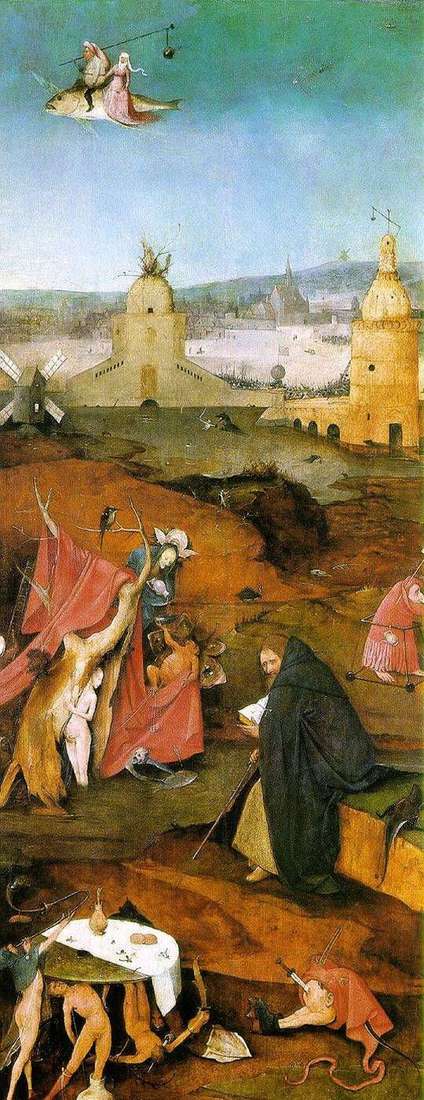
The painting “Visions of St. Anthony” is the right wing of the altar “The Temptation of St. Anthony”. When Saint Anthony lived as a hermit in the desert, he was pursued by the most seductive of all temptresses. In the Garden of Eden, the fall of man began with Eve and with the realization of sexual attraction, when Adam and Eve found out that they were naked. The devil is a saint naked, shyly covering his palm with a palm. Immersed in deep meditation, the saint is surrounded by personifications of various temptations.
Unpredictable to seductive visions, Antony is depicted here as a knight of faith, who triumphed over the forces of evil. This victory is the main theme of the right wing of the triptych. Antony looks away, but in his field of vision fall piercing demons, who gesture to the hermit. In the background, the brave city of the devil is ready to invite a saint, he only has to turn in that direction. In the moat, the dragon fights a man, a flame erupts from a round tower; the city is the hidden Hell, where the devil came from.
The Dutch mill, which introduces dissonance in the picture, points to deceptive possibilities of the earthly and mediocre and reminds of ergotism-poisoning of ergot caused by rotten grain: this disease was mistakenly called an anton fire. Quite a bit here and references to black magic – among the temptations of the saint, depicted in the central part of the triptych, there are also a black mass and a coven, to which, apparently, two figures are rushing, flying on the fish. It is believed that the devil helps sorcerers to fly to the place of demonic gatherings.
The naked woman, who is due to the curtain that the toad pulls back, according to the “Lives of the Fathers”, turns out to be a demon who assumed the form of a queen. A naked woman under an improvised tent is a sin of lust and adultery. The dry tree behind which it stands is an alchemical symbolism that is abundantly present in every scene of the triptych. Among the monstrous visions is an old gnome in a red hood that covers the entire body, except for the eyes and hooked nose. He goes to the baby walkers, a turntable is attached to his head.
Walkers and a turntable – an indication of human innocence, persisting not only in infancy, but throughout life. The covered table, which is supported by naked demons, is the image of the last temptation of the saint – the sin of gluttony. The mysterious action around the table symbolizes the sin of rackety life. Bread and a jug on the table are also a sacrilegious indication of the Eucharistic symbols.
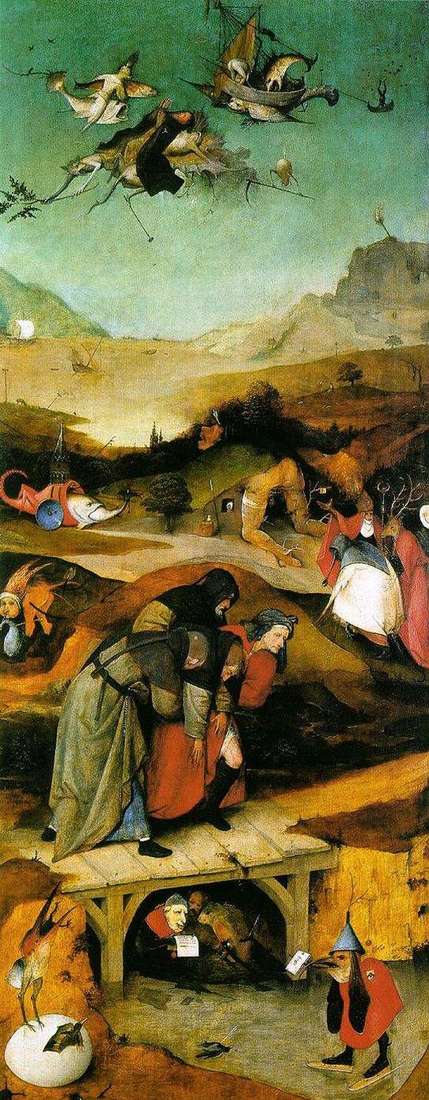 The flight and fall of Saint Anthony. The left wing of the triptych by Hieronymus Bosch
The flight and fall of Saint Anthony. The left wing of the triptych by Hieronymus Bosch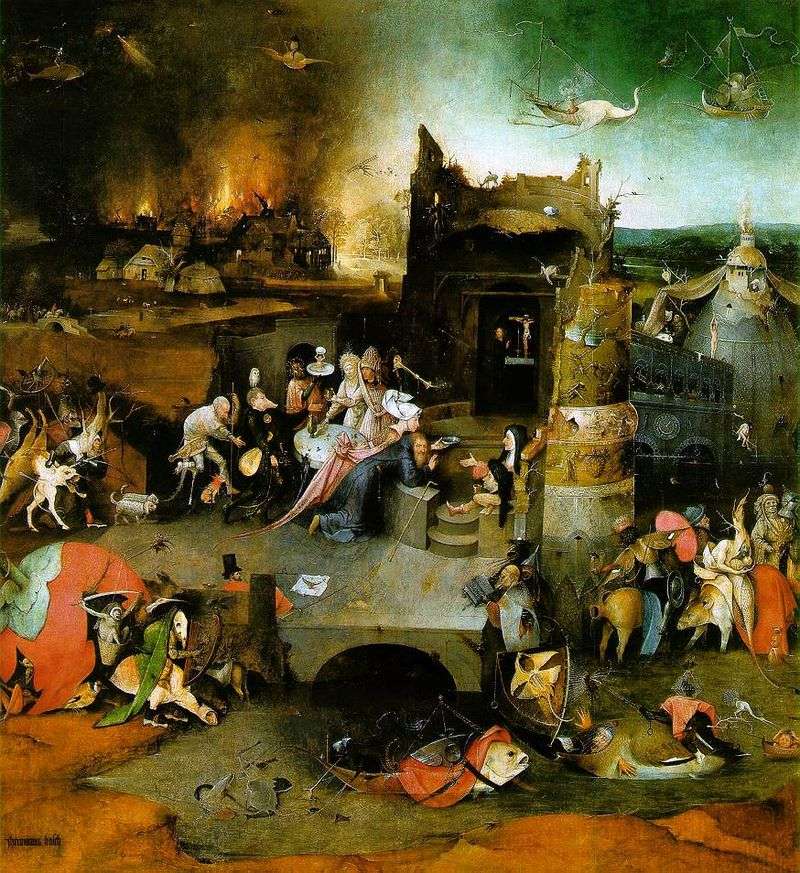 The altar of St. Anthony. The central part of the triptych is Hieronymus Bosch
The altar of St. Anthony. The central part of the triptych is Hieronymus Bosch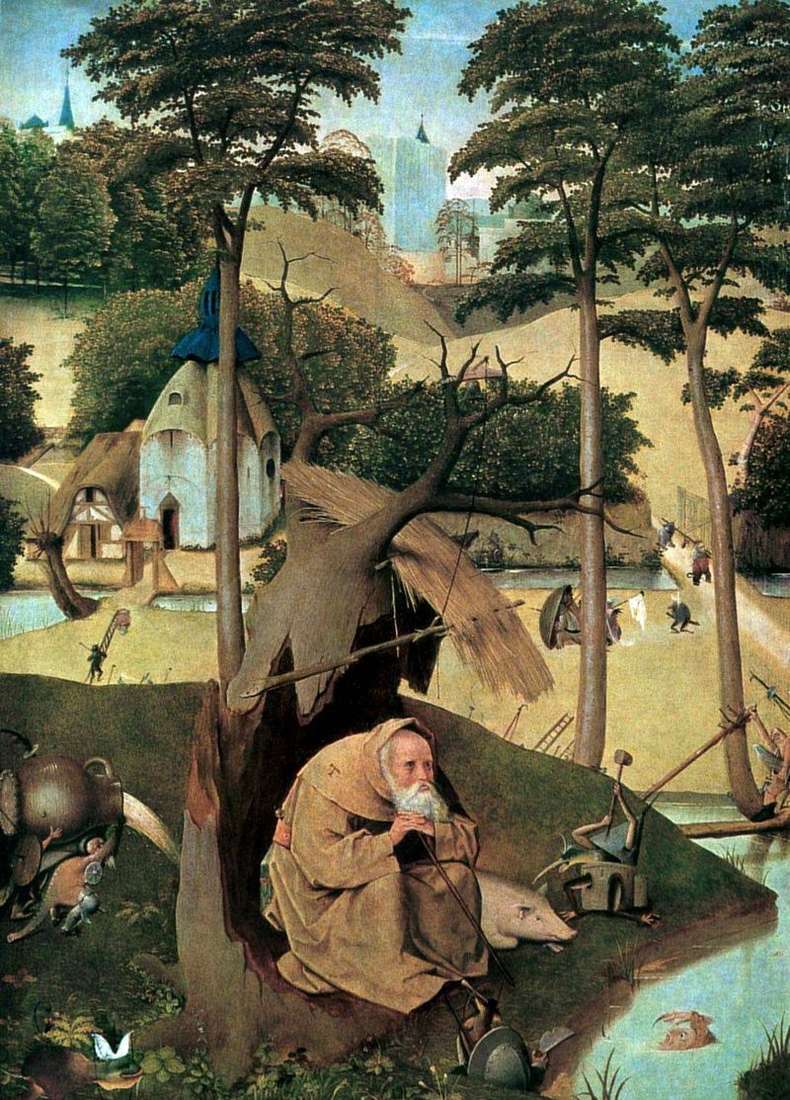 Saint Anthony by Hieronymus Bosch
Saint Anthony by Hieronymus Bosch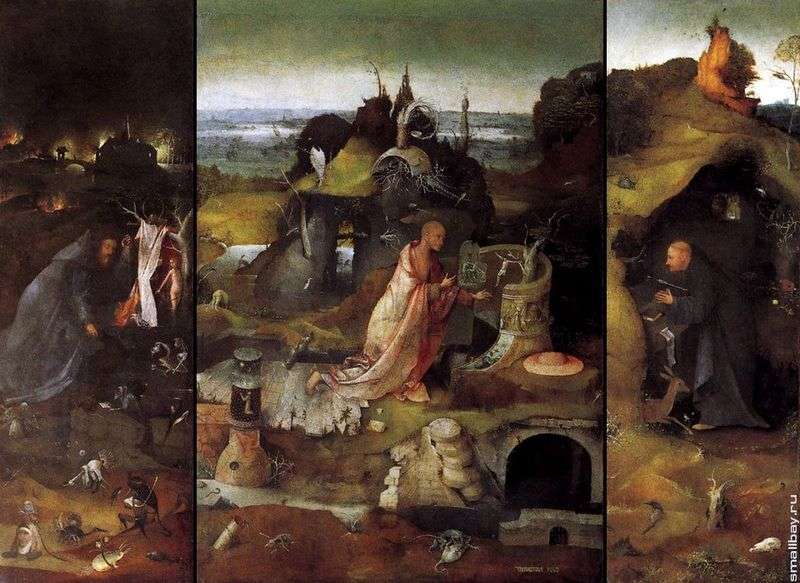 The holy hermits. Triptych by Hieronymus Bosch
The holy hermits. Triptych by Hieronymus Bosch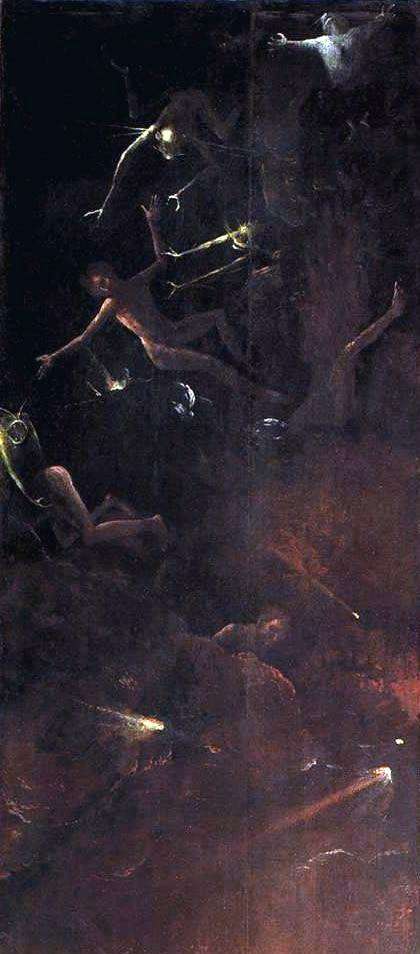 The overthrow of sinners, Visions of the Hereafter by Hieronymus Bosch
The overthrow of sinners, Visions of the Hereafter by Hieronymus Bosch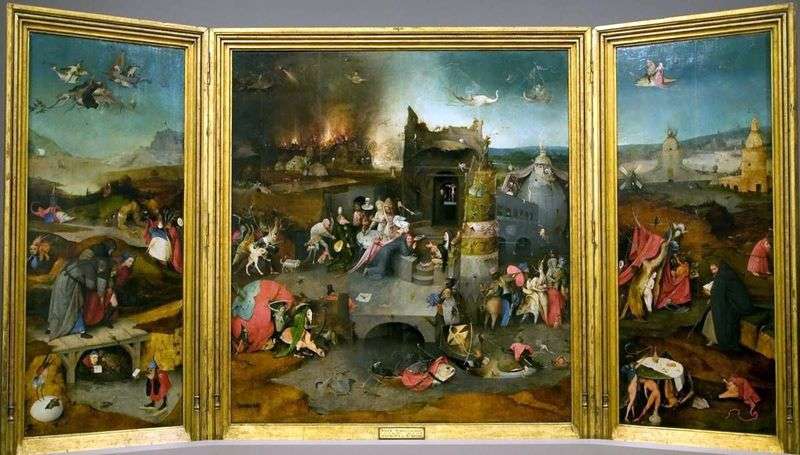 The Temptation of St. Anthony by Hieronymus Bosch
The Temptation of St. Anthony by Hieronymus Bosch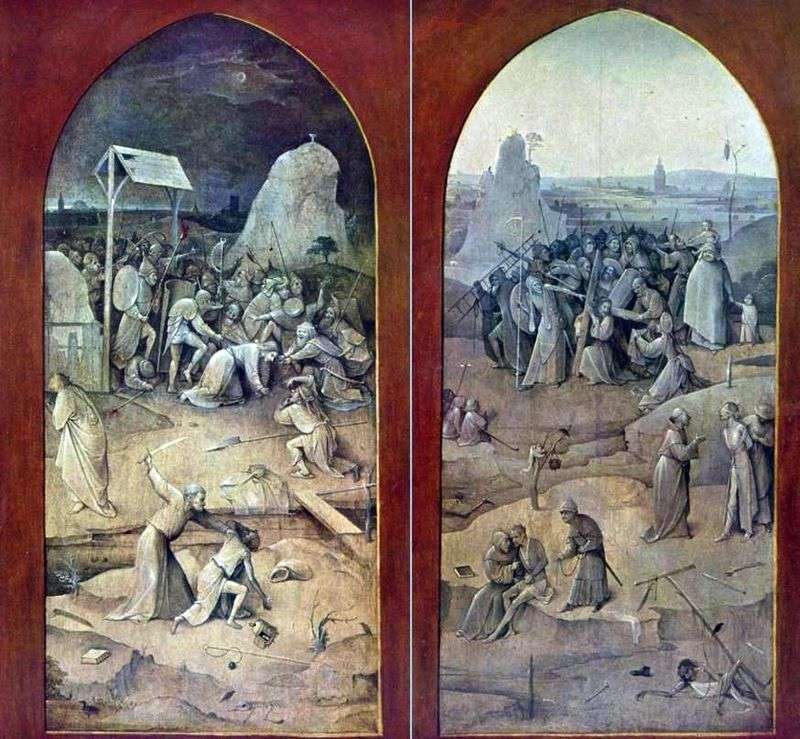 Taking in custody and Carrying the cross. The outer wings of the altar by Hieronymus Bosch
Taking in custody and Carrying the cross. The outer wings of the altar by Hieronymus Bosch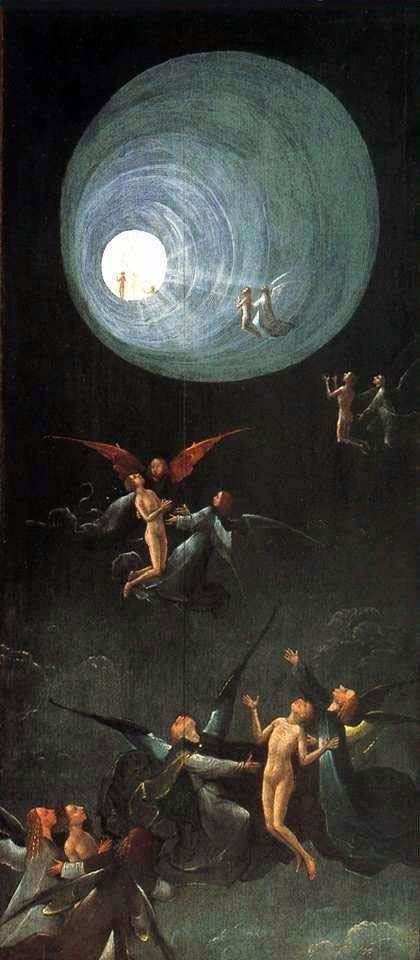 Ascension in the Empire, Visions of the Hereafter. Part of the altar by Hieronymus Bosch
Ascension in the Empire, Visions of the Hereafter. Part of the altar by Hieronymus Bosch